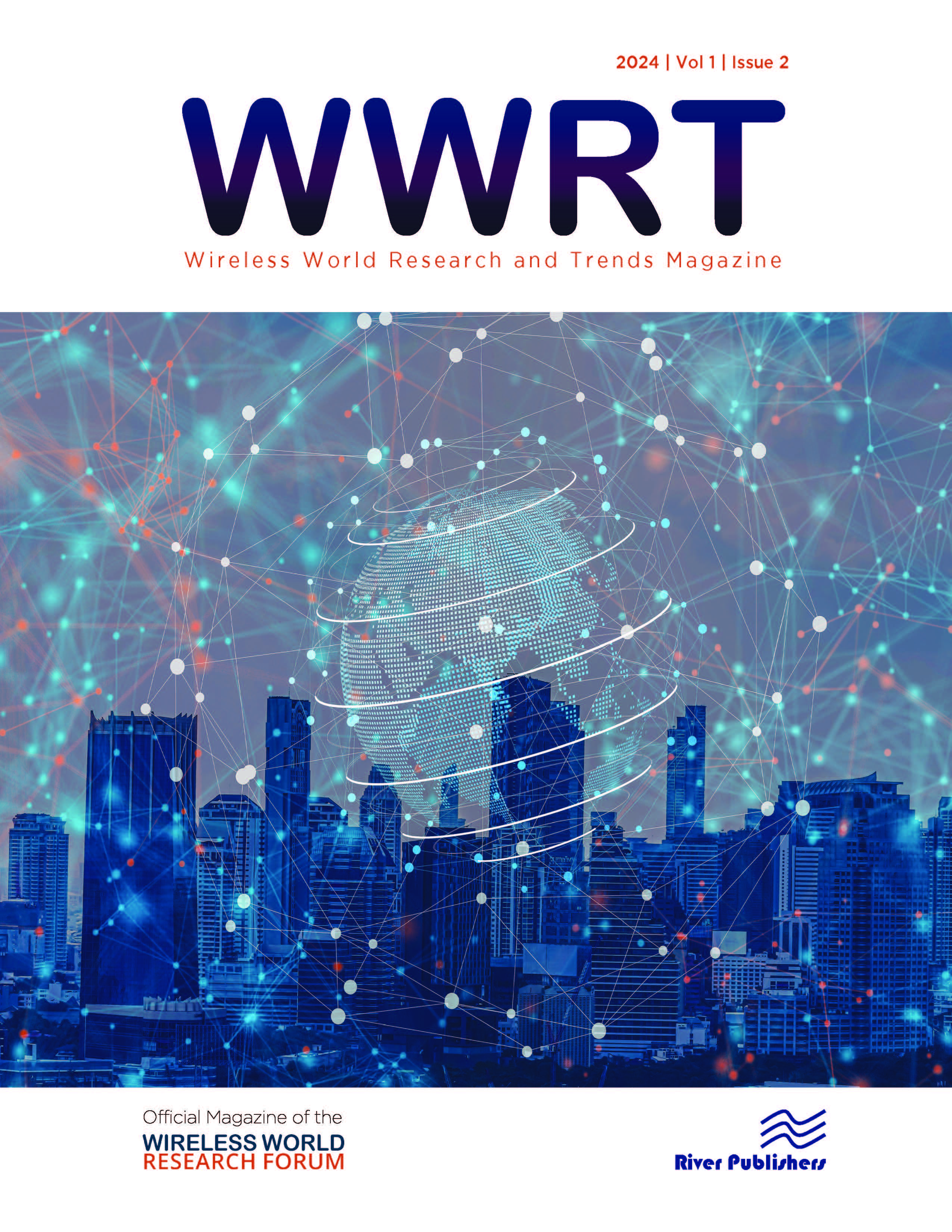Abstract
6G aims to address a number of societal challenges, while promising performance improvements over prior generations of international mobile communication technology. This calls for going beyond a traditional technology-driven approach in mobile communication system development and considering a wider set of values that are particularly driven by sustainability principles. In this 6G era, multi-disciplinarity, covering disciplines beyond telecommunications engineering, becomes an increasingly important approach to develop future-proof mobile communication technologies and services. This paper introduces a multi-disciplinary approach to 6G research and development (R&D) considering technology, business, regulation, and sustainability perspectives. Key topics and tools are introduced together with two case examples that illustrate how multi-disciplinarity, considering the proposed four perspectives, can bring new insights into practical topics relevant for 6G R&D.
References
M. Latva-aho and K. Leppänen, Eds., “Key Drivers and Research Challenges for 6G Ubiquitous Wireless Intelligence,” white paper, 6G Research Visions, no. 1, Univ. Oulu, Finland, 2019.
G. Wikström, N. Bledow, M. Matinmikko-Blue, H. Breuer, C. Costa, G. Darzanos, A. Gavras, T. Hossfeld, I. Mesogiti, K. Petersen, P. Porambage, R.-A. Stoica, and S. Wunderer, “Key value indicators: A framework for values-driven next-generation ICT solutions”, Telecommunications Policy, vol. 48, no. 6, 2024.
P. Ahokangas and A. Aagaard, Eds., The Changing World of Mobile Communications: 5G, 6G and the Future of Digital Services, Palgrave, MacMillan, 2024.
Future technology trends of terrestrial International Mobile Telecommunications systems towards 2030 and beyond, Report ITU-R M.2516, 2022.
Framework and overall objectives of the future development of IMT for 2030 and beyond, Recommendation ITU-R M.2160-0, 2023.
Hexa-X-II Deliverable D1.2 6G Use Cases and Requirements. Hexa-X-II project report, 2023.
D. J. Teece, “Profiting from innovation in the digital economy: Enabling technologies, standards, and licensing models in the wireless world,” Research Policy, vol. 47, no. 8, pp. 1367–1387, 2018.
C. Bekar, K. Carlaw, and R. Lipsey, “General-purpose technologies in theory, application and controversy: a review,” Journal of Evolutionary Economics, vol. 28, no. 5, pp. 1005–1033, 2018.
S. Yrjölä, P. Ahokangas, and M. Matinmikko-Blue, “Value Creation and Capture from Technology Innovation in the 6G Era,” IEEE Access, vol. 10, pp. 16299–16319, 2022.
S. Yrjölä, P. Ahokangas, and M. Matinmikko-Blue, “Complementarities and Externalities in 6G Platforms-Based Ecosystems,” EuCNC & 6G Summit, Antwerp, Belgium, June 2024.
P. Ahokangas, M. Matinmikko-Blue and S. Yrjölä, “Envisioning a Future-Proof Global 6G from Business, Regulation, and Technology Perspectives,”IEEE Communications Magazine, vol. 61, no. 2, pp. 72–78, February 2023.
M. Matinmikko-Blue, S. Yrjölä, and P. Ahokangas, “Multi-perspective approach for developing sustainable 6G mobile communications,” Telecommunications Policy, vol. 48, no. 2, 2024.
P.Ahokangas, A. Aagaard, I. Atkova, S. Yrjölä, and M. Matinmikko-Blue. Business models in 5G/6G mobile communications. In Ahokangas, P. & Aagaard, A. (Eds), The changing world of mobile communications. 5G, 6G and the future of digital services. Palgrave MacMillan, UK. 2024.
M. Agiwal, A. Roy and N. Saxena, “Next Generation 5G Wireless Networks: A Comprehensive Survey,” IEEE Communications Surveys & Tutorials, vol. 18, no. 3, pp. 1617–1655, 2016.
Minimum requirements related to technical performance of IMT-2020 radio interface(s), Report ITU-R M.2410,2017.
A. Osterwalder and Y. Pigneur,Business model generation: a handbook for visionaries, game changers, and challengers, John Wiley and Sons, Hoboken, New Jersey, 2010.
S. Yrjölä, P. Ahokangas, and M. Matinmikko-Blue,“Platform-based business models in future mobile operator business,”Journal of Business Models, vol. 9, no. 4, pp. 67–93, 2021.
M. Matinmikko, M. Latva-aho, P. Ahokangas, and V. Seppänen, “On regulations for 5G: Micro licensing for locally operated networks,”Telecommunications Policy, vol. 42, no. 8, pp. 622–635, 2018.
BEREC Report on Sustainability Indicators for Electronic Communications Networks and Services. Body of European Regulators for Electronic Communications (BEREC), BoR (23) 166, 2023.
Hexa-X-II Deliverable D1.1Environmental, social, and economic drivers and goals for 6G.Hexa-X-II project report, 2023.
F. Lüdeke-Freund, P. Wells, A. Aagaard. The Catalytic Role of Sustainability Transitions for Business Models. In: Aagaard, A. (eds) Business Model Innovation. Palgrave Macmillan, Cham. 2024.
N.M.P. Bocken, S.W. Short, P. Rana, S. Evans, A literature and practice review to develop sustainable business model archetypes,Journal of Cleaner Production, vol. 65, pp. 42–56, 2014.

